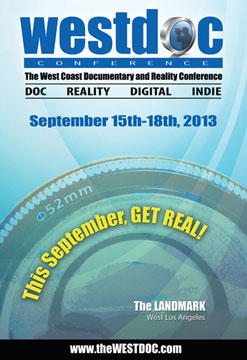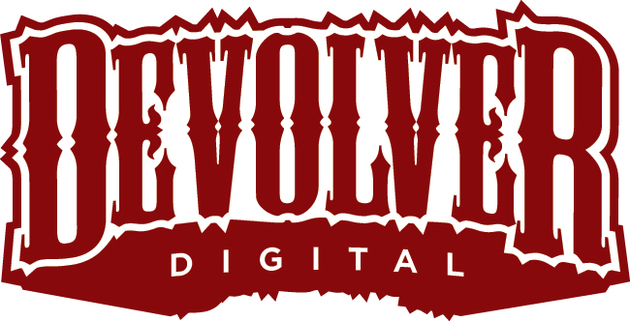
TIFF Riff Part 2-Positives, Negatives and Vimeo
TIFF IS HERE! Let the craziness (And the Jewish new year) begin! I figured I would split this into the good and bad from how films performed at last year’s fests. If you’re playing in the Contemporary World Cinema or Discovery section you might want to run to Vimeo ASAP, but more on that later. Let’s get the ball rolling, shall we?

Five positives to highlight from last year
- Midnight Madness Acquisitions
- Every film in the Midnight Madness section was acquired for domestic distribution and many (Lords of Salem, Aftershock) were for seven figure deals. The simple fact is that the horror audience is incredibly loyal. It is arguably the most loyal and consistent substantial audience that exists. It’s also often critic-proof, which is not the case for a downbeat drama.
- Black and White Film
- Frances Ha and Much Ado About Nothing were both arguably risky ventures despite the notoriety of people behind and in front of the lens. Both films were shot in black and white and rely on indie celebrity status for marketing. That said, each has grossed over $4,000,000 at the domestic box office. Frances Ha is IFC’s highest grossing film this year and Much Ado About Nothing is Roadside’s best box office performer from their long list of acquisitions at last year’s festival.
- Best Performers
- A number of smaller specialty distributors had their highest grossing US films to date come from 2012 festival acquisitions. Many of these films would not scream top box office though. One is arguably a massive disappointment.
- Cinema Guild took Museum Hours which has since grossed over $300,000. The film has been nothing if not a marvel, having passed the $200,000 mark before even opening in LA. For a company known for challenging foreign fare and documentaries, this film is no exception, but has clearly connected with audiences.
- Well Go USA took some action from abroad to the tune of just under $700k in the US via The Thieves. For a company based in Plano, TX that has to be a record.
- Drafthouse Films did so well with the documentary Act of Killing that TIFF is giving them a panel to explain their distribution strategy. HINT…GO…Tim League is one of the most entertaining people you will hear speak in any capacity. He is also usually quite candid and unpredictable. This film looks to top out at just under $500,000…over 300% above their next highest box office performer.
- Entertainment One’s expansion into the US box office has been a poor to mixed bag (not to worry though, they kind of dominate everywhere else). A Late Quartet stars Christopher Walken, Catherine Keener, and Philip Seymour Hoffman, but tepid reviews and no awards traction capped the film at around $1.5 Mil. Still, it’s their best performer in the States.
- Cohen Media Group specializes in handling foreign films. They specifically seem to like ones from France. Yet their highest grosser is from Lebanon (with French backing of course). The Attack is still going strong at the box office with $1.6 Mil in revenue and likely to add another $250,000 or so before it wraps. It’s only a matter of time before they pass the $2,000,000 mark with a film.
- A number of smaller specialty distributors had their highest grossing US films to date come from 2012 festival acquisitions. Many of these films would not scream top box office though. One is arguably a massive disappointment.
- Israel
- The Attack, The Gatekeepers, and Fill the Void all have something in common. They were at least partially shot in Israel and have all grossed over $1,000,000 in the US. In addition, Hannah Arendt has grossed over $600,000 which is particularly impressive when compared with other Zeitgeist releases of the past few years. While Eagles failed to attract buyer interest, Israel continues to be arguably the most reliable foreign language performer in the US. I would say it’s France, but their film industry is much more robust. Many of their top films will never come here and I can’t say that with Israel. To put it another way, the US box office total combined for these four films would be equal to $1 donation from every Israeli citizen.
- HBO Docs
- Sheila, Sheila, Sheila. If you don’t know her name, you clearly don’t know squat about the Docs. Mea Maxima Culpa premiered at the fest and was one of only two TV Docs to get on the Oscar shortlist (the other one, Ethel, was also an HBO Doc). HBO paid big and got the two most star studded docs of the festival, Love, Marilyn and Casting By. For documentaries, TV continues to be the major power player and nobody ponied up more money for a Doc at the fest than HBO did when they partnered with Cinedigm for Love, Marilyn. Sale price was between $1.25 million and $1.75 million.
Five negatives to highlight from last year
- Midnight Madness Box Office
- Dredd was a giant studio disappointment and major money loser after opening in the US on 2500 screens with a PSA of $3426. Reported production budget was $50mil, but pulled in a worldwide BO gross of a little over $35mil. Eli Roth’s Aftershock never took off on digital or theatrically where it opened to a PSA under $500 and failed to gross over $100k. Come Out and Play meanwhile couldn’t even pass $5k. Rob Zombie’s The Lords of Salem managed over $1,000,000 after buyer Anchor Bay capitalized on publicity surrounding Zombie’s new book and album, but still didn’t justify the acquisitions price (reportedly $2mil) and bidding war for the title.
- Films with Title Changes
- Girl Most Likely and Stuck in Love are both star driven comedies that originated with horridly bland titling (Imogene and Writers respectively). Despite the attempts of Roadside Attractions and Millenium Entertainment to rebrand the films, both are each company’s lowest performing TIFF acquisition. Girl Most Likely saw grosses drop 72% in its second weekend and Stuck in Love will not even pass $100k. Both films saw much better results on VOD, but at the end of the day, compared to top performing acquisitions titles from these players, both can be considered disappointments. Meanwhile TWC’s Unfinished Songs (Formerly Songs for Marion) has barely outgrossed their Norwegian epic Kon-Tiki. EEK!
- African and Eastern European Cinema
- A look at the films that failed to secure distribution last year and it becomes clear that buyers were not enjoying anything from the entire continent of Africa. I mean literally, THE ENTIRE CONTINENT! There was not a Tsotsi in the bunch.
- Award winning films without distribution going into the festival
- Artifact won the audience award for best doc, the Fipresci prize went to Detroit Unleaded and both have yet to find a home in the States. Artifact will all but certainly go DIY and who knows what the future holds for Detroit Unleaded which does not have the benefit of name recognition or Jared Leto’s face.
- The lack of prominent DIY and Alt distribution models
- Spring Breakers was a pact between the producers and A24. There were otherwise no prominent examples of DIY releasing, hybrid theatrical or new ideas that sprung out of the festival. Yes, Snoop Lion self-released his doc Reincarnated, but that was to disastrous results and the doc was nothing more than a vanity project.
- Clearly, the fest knew things had to change based on Tuesday’s announcement. In case you’ve been living under a rock or stuck in Venice, Vimeo has offered a game changer to films that will world premiere at TIFF. A $10,000 MG to the films that give Vimeo a 30 day premiere VOD window. If the film makes back the $10k before the 30 days, it switches to their standard and by all accounts fantastic 90/10 split. Yes, YOU get to keep 90%! Any film that’s not a star vehicle would be a fool not to take them up on the offer, especially since they can still seek acquisition. In fact, a smart distributor will see all the free press they will get from the publicity and look for the films that say yes. Naturally, I expect most to do the opposite and argue that the lost revenue will require them to lower their offers. That should be a red flag to any filmmaker if it happens. Similarly, if a sales agent is telling you to pass, so that your film from Croatia can wait for the American dollars to pour in, you should terminate your relationship on the spot! No word yet though on what happens for the films that did the 1-2 punch and premiered at Locarno or Venice.
BONUS
Congratulations to TFC alums with films in the festival.
- Amy Seimetz (Pit Stop) stars in Ti West’s latest flick The Sacrament.
- Jody Shapiro (How to Start Your Own Country) directed Burt’s Buzz
- James Franco (Kink and Interior. Leather Bar) wrote, directed and stars in Child of God, wrote the source material for and stars in Palo Alto, and stars in Third Person. More impressive is the fact that he has had films at Sundance, Berlin, SXSW, Tribeca, Cannes, Venice, and Toronto this year.
I’ll be on the ground in Toronto again this year and hope to report back about my findings and the deals made.
Below is a list of films from TIFF and how they’ve performed at the box office. I chose not to include any film that was from a studio or mini major and opened wide. I also chose not to include films that premiered at Berlin, Sundance, or SXSW and had already secured distribution.
| Film | Distributor | Box Office Gross |
| Come Out and Play | Cinedigm | $2,638 |
| What Richard Did | Tribeca Film | $2,749 |
| Inescapable | IFC | $4,327 |
| The Time Being | Tribeca Film | $5,274 |
| The Brass Teapot | Magnolia | $6,997 |
| Inch’Allah | EOne | $9,155 |
| I Declare War | Drafthouse Films | $10,793 |
| Greetings from Tim Buckley | Tribeca Film | $11,157 |
| Viola | Cinema Guild | $15,471 |
| The ABC’s of Death | Magnet | $21,832 |
| Pieta | Drafthouse Films | $22,080 |
| The Patience Stone | SPC | $23,296 |
| Far Out Isn’t Far Enough: The Tomi Ungerer Story | First Run | $27,156 |
| The Bay | Roadside Attractions | $30,668 |
| Berberian Sound Studio | IFC | $31,641 |
| How To Make Money Selling Drugs | Tribeca Film | $39,192 |
| Passion | Entertainment One | $40,100 |
| The Fitzgerald Family Christmas | Tribeca Film | $50,292 |
| Venus & Serena | Magnolia | $51,271 |
| Aftershock | Radius-TWC | $58,510 |
| More than Honey | Kino Lorber | $66,728 |
| Leviathan | Cinema Guild | $72,816 |
| Something in the Air | $73,306 | |
| No One Lives | Anchor Bay | $74,918 |
| Stuck In Love (Formerly Writers) | Millenium Entertainment | $81,071 |
| Byzantium | IFC | $85,252 |
| Storm Surfers 3D | Xlrator | $117,090 |
| Free Angela and All Political Prisoners | Code Black | $129,102 |
| Midnight’s Children | Paladin/108 Media | $190,022 |
| No Place on Earth | Magnolia | $200,238 |
| Arthur Newman | Cinedigm | $207,853 |
| Tai Chi 0 | Variance/Well Go USA | $212,094 |
| Blancanieves | Cohen Media Group | $240,310 |
| Museum Hours | Cinema Guild | $304,145 |
| A Werewolf Boy | CJ | $342,922 |
| Act of Killing | Drafthouse Films | $379,598 |
| At Any Price | SPC | $380,594 |
| In the House | Cohen Media Group | $389,757 |
| A Hijacking | Magnolia | $401,366 |
| The Reluctant Fundamentalist | IFC | $528,731 |
| Still Mine (formerly Still) | Samuel Goldwyn | $586,767 |
| To The Wonder | Magnolia | $587,615 |
| Hannah Arendt | Zeitgeist | $636,505 |
| The Thieves | Well Go USA | $685,839 |
| Lore | Music Box Films | $970,325 |
| From Up on Poppy Hill | GK | $1,002,895 |
| Ginger & Rosa | A24 | $1,012,973 |
| What Maise Knew | Millenium Entertainment | $1,065,000 |
| The Lords of Salem | Anchor Bay | $1,165,882 |
| Girl Most Likely (Formerly Imogene) | Roadside Attractions | $1,377,015 |
| Disconnect | LD | $1,436,900 |
| Kon-Tiki | TWC | $1,517,410 |
| A Late Quartet | Entertainment One | $1,562,546 |
| The Attack | Cohen Media Group | $1,580,787 |
| Stories We Tell | Roadside Attractions | $1,584,890 |
| Love is All You Need | SPC | $1,608,982 |
| Unifnished Song (Formerly Song for Marion) | TWC | $1,634,532 |
| Fill the Void | SPC | $1,757,195 |
| English Vinglish | Eros | $1,862,086 |
| The Iceman | Millenium Entertainment | $1,943,239 |
| The Gatekeepers | SPC | $2,415,727 |
| Emperor | Roadside Attractions | $3,346,265 |
| Frances Ha | IFC | $4,043,502 |
| Much Ado about Nothing | Roadside Attractions | $4,262,205 |
| The Company You Keep | SPC | $5,133,027 |
| Hyde Park on Hudson | Focus | $6,376,145 |
| Anna Karenina | Focus | $12,816,367 |
| Spring Breakers | A24 | $14,124,284 |
| The Master | TWC | $16,377,274 |
| The Perks of Being a Wallflower | Summit | $17,742,948 |
| Quartet | TWC | $18,390,117 |
| The Impossible | Summit | $18,889,600 |
| The Place Beyond the Pines | Focus | $21,403,519 |
| Silver Linings Playbook | TWC | $129,729,000 |
| Clip | Artsploitation | BO Not Reported |
| Pusher | Radius-TWC | BO Not Reported |
| Iceberg Slim: Portrait of a Pimp | Phase 4 | BO Not Reported |
| Janeane from Des Moines | Red Flag Releasing | BO Not Reported |
| Reincarnated | DIY | BO Not Reported |
| State 194 | Participant Media | BO Not Reported |
| The Secret Disco Revolution | Screen Media | BO Not Reported |
| Wasteland | Oscilloscope | BO Not Reported |
| The Lesser Blessed | Monterey Media | BO Not Reported |
| Motorway | Media Asia Films | Digital Only |
| Everybody Has a Plan | 20th Century Fox | Digital Only |
| London-The Modern Babylon | Brittish Film Institute | Digital Only |
| Lunarcy! | Epix | Digital Only |
| Camp 14 – Total Control Zone | Netflix | Digital Streaming |
| Picture Day | Arc Entertainment | Digital/DVD only |
| My Awkward Sexual Adventure | Tribeca Film | Digital/DVD only |
| The Deep | Focus World | Digital/DVD only |
| Bad 25 | ABC | TV |
| 9.79 | ESPN | TV |
| Casting By | HBO | TV |
| First Comes Love | HBO | TV |
| Love, Marilyn | HBO | TV |
| A Liar’s Autobiography | Epix | TV |
| Mea Maxima Culpa | HBO | TV |
| Roman Polanski: Odd Man Out | Showtime/Gravitas | TV/Digital |
| Jayne Mansfield’s Car | Anchor Bay | Not Yet Released |
| The Last Time I Saw Macao | Cinema Guild | Not Yet Released |
| Men At Lunch | First Run | Not Yet Released |
| Out in the Dark | Breaking Glass | Not Yet Released |
| Thanks For Sharing | Roadside Attractions | Not Yet Released |
| Zaytoun | Strand Releasing | Not Yet Released |
| Shepard & Dark | Music Box Films | Not Yet Released |
| Capital | Cohen Media Group | Not Yet Released |
| Mekong Hotel | Strand Releasing | Not Yet Released |
| Three Worlds | Film Movement | Not Yet Released |
| Ghost Graduation | Fox | Not Yet Released |
| The End of Time | Sony Pictures Worldwide | Not Yet Released |
| Great Expectations | Outsource Media Group | Not Yet Released |
| Twice Born | Entertainment One | Not Yet Released |
| The Deflowering of Eva Van End | Film Movement | Not Yet Released |
Bryan Glick September 5th, 2013
Posted In: Distribution, Film Festivals
Tags: <u, A Late Quartet, Act of Killing, Aftershock, Artifact, Casting By, Come Out and Play, Detroit Unleaded, distribution, Dredd, Eagles, film sales, Frances Ha, Girl Most Likely, independent film, Lords of Salem, Love, Marilyn, Mea Maxima Culpa, Midnight Madness, Much Ado About Nothing, Museum Hours, Reincarnated, Spring Breakers, Stuck in Love, The Attack, The Thieves, TIFF, Toronto International Film Festival, Unfinished Songs, Vimeo
International broadcast sales for documentary and WESTDOC Conference
A interview with the West Coast Documentary and Reality Conference (WESTDOC) Co Founder Richard Propper. Mr. Propper is also CEO and Director, International Licensing and Acquisitions at Solid Entertainment, a sales agency specializing in documentary films.
TFC: How long have you been doing international sales and with which entities and films?
RP: “I have been licensing non-fiction programming for 19 years. It wasn’t something I fell into, I had a great desire to combine the entertainment industry and international business – and I’m a current affairs and history junkie. Having completed film school and working for a small studio for years in post production, I saw a vast number of filmmakers with great documentary films, but no knowledge of what to do next. I wanted to be the first call for filmmakers when they thought about international sales.”
“Solid Entertainment has been successfully licensing programs worldwide for almost two decades via such broadcasters as: Animal Planet, ARTE, BBC , BBC2, BBC Horizon, BSkyB, Channel 4, Canal+, The Discovery Channels (worldwide), France 2/3, France 5, HBO, History Channel, M6, NBC, NHK, NOS-EO, National Geographic Channels(worldwide), Odyssee, ORF, Orbit, Planete, Premiere, Showtime, STAR Entertainment Channel, SPIEGEL TV, STERN-TV, SBS6, SF-DRS, TaurusFilm, The Travel Channel, TSR, TV Ontario, RAI, RTI, RTP, REAL-TV, VTM, ZDF.”
“At Solid Entertainment, our deal terms are pretty standard. A flat rate of 30%. No deduction for expenses. 3 year exclusive term of representation.”
TFC: What trends do you see on sales side for documentaries? Please be specific in terms of territories, rights, prices, types of films that perform v not etc.
RP: “They love (insert doc subject here) in Japan!” – Every new filmmaker I’ve ever met. – Richard Propper
“I’m going to throw a bucket of cold water on many peoples perceptions of the international broadcast marketplace. In many ways, its tougher now than ever before. There’s a huge oversupply of programs. Technology has worked wonders for the creation of content, leading to more of it. The non-fiction broadcast marketplace has been impacted by Reality TV. Channels need ratings and they have only so many hours they can license and co-produce. The line has blurred between documentaries and reality, so channels gradually began to license more and more Reality. Most territories in Europe still license good documentaries, but license fees have been declining for a few years. Asia and Latin America continue to pay modestly. Larger US broadcasters now want all rights deals. It didn’t use to be that way, a producer could count on the international rights as his/her “back end monies.” Not anymore.”
“Today, we see around $8,000 for an hour in Germany. We used to see $20,000. France, about $7,500 and it used to be $15,000. The UK – as high as $80,000, now $25,000. Generally, all the digital, free follow along rights go with the license fee. Pay VOD is still retained by the producer. We’ve had to sell more content overall and look harder for the opportunities.”
“Uniquely, American programs don’t do very well in the international marketplace. World history, nature and wildlife, buried treasure stories, science and technology stories all do well. American social issues or narrow political issues are a much harder sale. When was the last time you saw a great Italian documentary? You haven’t. Americans think our programs should sell everywhere, but we don’t reciprocate by programming other countries films on our networks. The international marketplace looks for programs that are somehow universal. It’s an art, not a science in producing programs that are attractive to the worldwide audience. I will say that some buyers recognize a well told story, others don’t. If it’s all talking heads or about some strange subculture – it won’t sell. We look at everything that comes into our office for representation – there are always surprises. If you haven’t captured the audience within the first 10 minutes, its likely the buyers aren’t going to stick around either.”
“Running times are important. If your dream is to make a feature doc, then try to come in at 75 – 100 minutes. Have a 50 minute cut-down planned for the broadcast one-hour slots. 90% of the world broadcast slots are one-hour. If there’s only a feature version, it has to compete with every Academy nominated doc or Morgan Spurlock’s or Michael Moore’s latest feature. It a very hard road if you’re not prepared. But it’s not all bad news.”
“The digital marketplace is starting to come into its own. While broadcast is challenging, there is a long tail strategy with digital – it just needs a little more time to stand on its own two legs. It takes strategy to get a good film released onto multi-platforms and various times. These strategies are being pioneered now. That is exciting. A larger audience for many films is out there, and technically there’s a way to deliver it. You just have to find and engage that audience.”
TFC: Explain the DVD landscape.
RP: “While the general focus, and rightly so, has been on VOD and a la carte program sales, I’ve found in the last year some DVD distributors who are looking for content. Keep in mind that there’s still a huge population of people who have this machine connected to their TV that provides supplemental content. We’ve had good luck getting a 4 part limited series and larger multi-episode series into Costco and Target. It’s short term sales, but its also unexpected revenue stream. VOD and a la carte programming is great, but it requires working with the right groups to get your content out there. While filmmakers are waiting for the magic formula to distribute digitally, DVD still has a place. It’s going away, but not as quickly as you might think.”
TFC: What is WESTDOC and why should filmmakers attend?
RP: “Over nearly 2 decades of traveling to television markets and film festivals, I realized that LA needed a substantial documentary conference of its own. One that wasn’t sponsor driven, nor a fortune to attend. Chuck Braverman is a friend and producer, who for years would run into me at various conferences and ask me why there wasn’t a decent conference in LA (I was President of IDA at the time) and proposed that we start one. I begged off for a time and then thought – why not? WESTDOC was born.”
“While there are some terrific conferences in other cities, LA really has this fractured creative community. Most filmmakers belong to several organizations. But where are the conferences that bring in the decision makers? Here is a true story. I was at a conference in Cannes (MIP or MIPCOM) having a meeting with someone who worked 25 minutes away from my office. I had traveled 9,000 miles to meet her. How ridiculous. With WESTDOC we’re getting these decision makers out of their offices and into an event to connect with the LA creative community.”
“When Chuck and I first sat down, we selected the best pieces from IDFA, HOT DOCS, MIP, NATPE, and all the rest. When we were done with our mission statement and outline, we knew it would be a great conference. Luckily, between us we had really great contacts with filmmakers and broadcasters. To our surprise, everyone we asked to speak said they would show up! Looking back, just our keynote speakers are an impressive bunch; RJ Cutler, Thom Beers, Kirby Dick, Joel Berlinger. Not bad for an unknown conference! This year we have Rory Kennedy, Ondi Timoner, and Kelly Day. We have 25 panels that are in the wheelhouse of documentary, Reality, and Digital. In addition, this year we have The Sit-Down – 30 minute broadcaster overviews with 43+ different networks.”
The 2013 WESTDOC Conference will take place September 15-18 at the Landmark Theater in Los Angeles, CA. For a full schedule of speakers and activities, visit their website. TFC Members will receive a promotional code for a discounted ticket. Become a TFC Member today!
About Richard Propper:
Solid Entertainment Founder and President Richard Propper is the former President of the International Documentary Association (IDA), and executive producer of over thirty internationally broadcast documentary programs. Solid Entertainment is a broadcast distribution company and one of only a handful of US specialty companies which has consistently supplied non-fiction programming to networks worldwide with a particular emphasis in Western Europe. He has spoke as an authority on development, co-production agreements, and the intricacies international distribution at: MIPDOC, HOT DOCS, IFP, AFM, Silverdocs, Realscreen Summit, NATPE, IDA, UCLA, and USC. Richard is also the co-founder of WESTDOC: The West Coast Documentary and Reality Conference. WESTDOC is a three-day event that brings together preeminent producers, directors, writers, network executives, agents and distributors for insightful and unique seminars, as well as networking opportunities.
Orly Ravid August 29th, 2013
Posted In: Digital Distribution, Distribution, education, International Sales
Tags: documentary film, foreign sales, independent film, international broadcast sales, Orly Ravid, Richard Propper, Solid Entertainment, The Film Collaborative, WESTDOC
Do festival awards matter?
The simple answer is “yes..well…sometimes.” Like most questions in this business, there is a simple answer for casual conversation, and a truer answer for a more in-depth analysis.

It would be nice to say that all film festival awards are valuable for independent film distribution, but the truth is that it mostly comes down to what Festival it is (what actual award it is is less important for the most part). The simplest rule is, if a particular Festival matters, then an Award from that Festival matters even more. If a particular festival doesn’t show up on anyone’s radar, then the Award won’t either. The easiest comparison to draw is the use of press/publicity quotes in marketing…i.e. nobody cares about a glowing review from a press outlet they’ve never heard of. But if a respected journalist at a respected publication gives you a great review…well that matters a great deal.
We’ve worked on a lot of seemingly “small” films, like CONTRACORRIENTE by Javier Fuentes, VALLEY OF SAINTS by Musa Sayeed, A RIVER CHANGES COURSE by Kalyanee Man, and THE INVISIBLE WAR by Kirby Dick that jumped up hugely in prestige and profile when they won big awards at the Sundance Film Festival. Suddenly “everyone that’s anyone” had heard of these films even though they paid no attention to them just two days before. By getting the ultimate stamp of approval, they suddenly became “serious” films in the minds of those who pay attention to such things.
But let’s not exaggerate… as much as they changed the general perception of the films, I don’t think they really changed the acquisitions picture for any of these particular titles. Maybe the PRICES went up for those that did get bought, but I don’t think it radically changed the number of buyers interested in the titles. And not all of those ever got serious acquisition offers anyway.
I think there are three major ways that festival awards matter. First of all, it distinguishes you from the glut of available titles at any given festival as one of the films that one should pay attention to first. Meaning, if you are the kind of person (Industry, press, or consumer) who is paying attention to a particular festival, then of course one easy way to determine what one should see first is by starting with the ones that have won the awards. I think this is PARTICULARLY true for OTHER film festival programmers, who face the daunting task of pouring through thousands of available titles and submission to their festival. Why NOT start with the ones that are winning awards? Its just good triage technique.
Secondly, if someone is a discerning film consumer looking to discover new films to watch, why wouldn’t you pay attention to the films that are winning the awards? To that end, I think the right Festival Awards have tremendous marketing value…but really only for the discerning consumer. So, that’s not the majority of consumers, but there ARE a lot of cinephiles out there. And they are the first audience any independent filmmaker wants to reach.
Let me give you a simple marketing example….I am on the e-newsletter of LOTS of films that send me updates on their progress all the time…and for the most part I pay no attention to them. But if I start to notice that the film is winning a lot of great awards…which can be easily put in the subject line and the header of the email….of course I take note of that and of course I become more interested in the film. Suddenly it changes in my mind from one of a million films vying for my attention to one that must deserve my attention…because it is being validated by “tastemakers” I have heard of and have some respect for.
On the subject of the marketing value of Festival Awards, there are a couple of truisms I’d like to address:
1) The general perception is that Audience Awards matter more than Jury Awards, because they reflect the will of the people (which more closely resembles your eventual target audience), while Jury Awards reflect the view of the elite (those select insiders chosen by festivals to judge according to their own snobby tastes). In truth, I don’t think this theory stands up to rigorous analysis of the data. Sometimes it is the opinions of the jury that most closely mirror the press and taste-makers that propel a film onto greater success after its Festival run.
2) Part of the problem with Audience Awards is that in many ways they are popularity contests, not dissimilar to high school president elections. Because of the way Audience Awards are voted on by everyone in a given screening, sometimes its just the film that packs the house with the most crew and friends and close-knit community that wins the Award. Sometimes even a great Q&A can swing the results. And enterprising filmmakers should take note of this….as it is not unusual for a small film in a small theater to win an Audience Award because the filmmaker simply had more friends in attendance than anyone else did.
Unfortunately, the dominance of digital distribution in today’s independent market has made the marketing value of film festival awards a lot LESS relevant than they used to be….and that’s because iTunes, cable VOD et al don’t really offer much marketing space where you can actually SEE any of the Festival awards. When you used to browse through a video store and pick up the box cover, you could actually SEE all the laurels and rent it for that reason. Now you’re going to have to see the laurels in an email or banner ad or hear about it in a review or something…and then go LOOK for the film. That’s a lot less immediate than it used to be, and it makes the job of marketing a lot harder.
Finally, lets not downplay the fact that a lot of Festival Awards come with MONEY! There are some staggeringly large Festival awards out there…Dubai, Heartland etc…but I don’t advocate submitting to festivals just to go after the award money. That’s just gambling and your odds are probably better on a slot machine. But when a film starts to rack up a few awards, it can certainly get into the five figures of revenue…..and in this market that’s certainly nothing to sneeze at!
Jeffrey Winter August 1st, 2013
Posted In: Film Festivals
Tags: A River Changes Course, awards, Contracorriente, Digital Distribution, distribution, festival programmers, Film Festivals, independent film, Jeffrey Winter, prizes, Sundance Film Festival, tastemakers, The Film Collaborative, The Invisible War, Valley of Saints
Homework before you sign a sales agent
Further to my last blog, here’s a little advice on working with sales agents. Before you sign with a sales agent, it is critical to do some homework to figure out whether the deals you could get with their help will be better than the ones you could get on your own.
-What films has this company sold? Are they similar to the kind of film you have? Do those films have the same assets (cast, budget level, festival pedigree, cause or interest based)?
-Where did they sell? Domestically or internationally? Only very large agencies have the ability to handle both and sometimes a large agency won’t be a good fit for smaller films. Bigger slate=less attention to go around. Bigger agencies tend to give preferential treatment to their bigger name clients so if you are just starting out or haven’t built up a strong name yet, don’t expect to get red carpet service.
-For what kind of prices? This may get cagey as many people in the film business don’t like to talk about other people’s deals (unless it is gossip of course!), but they should be able to give a realistic narrow range of what you can expect based on similar films they have sold.
-What are the terms? Query if the fee to the sales agent and recouped expenses are worth it or if you can just do the couple small deals directly…
-Was the revenue remitted to the filmmaker? Can the agent collect? You should want to know what percentages and recoupment will reduce your share of the sale as well as this agent’s track record for collecting from distributors and paying filmmakers. On this question, you’ll need to contact the filmmakers who have worked with the company and see if they did receive their advances and further revenue. We always recommend making sure that all rights terminate upon material delay of payment. Be specific and be clear so you are not stuck in a deal where you won’t be paid.
Agencies love to show off nice catalogs of films they represent, but a list of titles will not tell you the information you need to know if you want to make your money back or make it back for your investors.
If a sales agent or lawyer approaches you or you want to approach him or her to sell your film, drill into the details. Even on the LGBT front not all films are alike. Not all of them can do the same deals, or any deals at all. Not all have the same revenue stream potentials. Documentaries are different from narratives, for example. And of course this is true of other categories of films. One of the hardest for TFC to handle and one of the hardest to sell in general, especially out of a non-A-list festival, is a drama without name cast.
Working with a sales agent that is taking a 10% commission off of the sales she brings in doesn’t bother me. 10% is not a lot of money for an agent who brings in a six-figure advance, and most likely she will bring in less for the majority of independent films. But I am concerned about paying a producer’s rep a big up-front fee, as there are many bottom-feeding producer’s reps whose business model is only collecting the fee and offering little else. For a good one who offers invaluable advice in the early stage of production and whose contacts may indeed be useful, it could be worth paying for. It is easy enough to Google someone’s name and see the kinds of projects with which they have been associated. If the only sources citing their involvement belong to sites they run, be cautious about making upfront payments and giving an ownership stake in your work.
Let me end with saying any industry professionals reading this please, please share the types of films you are handling and the deals you are doing, be specific. We share our film slate and numbers and if you do too, filmmakers can make educated choices.
I think much of the time filmmakers will still want someone else to handle their distribution and may be happy to do deals even if there is no profit, if only to establish and develop their careers. But let them make that choice as informed filmmakers, not still clinging to the allure of the 1990’s.
Orly Ravid July 25th, 2013
Posted In: Distribution, International Sales
Tags: collection, film sales agents, independent film, Orly Ravid, Producer's reps, terms
Following up on TFC filmmakers-The documentaries
Last week, I brought you up to speed with some of our clients from the narrative side and now I want to let you know about some of our documentary talent.
One of the perks of working with The Film Collaborative is that I get to help these important stories reach a wider audience. Our docs have been nominated for multiple Emmy Awards, Independent Spirit Awards, and have won both Audience and Grand Jury prizes at Sundance. In fact, Kalyanee Mam’s A River Changes Course won the World Doc Jury Prize at Sundance earlier this year. As a history buff and political activist, I think these filmmakers and their subjects all deserve special attention. I would also like to recognize that Marta Cunningham recently won the jury prize for best doc at Frameline where her Sundance doc Valentine Road was the centerpiece. In addition Yoruba Richen‘s LAFF doc The New Black won the audience award at Frameline and AFI (in the same week!). The film was also an honorable mention for the jury prize at Frameline. Below is just a small sampling of the visionary truth tellers we have worked with.
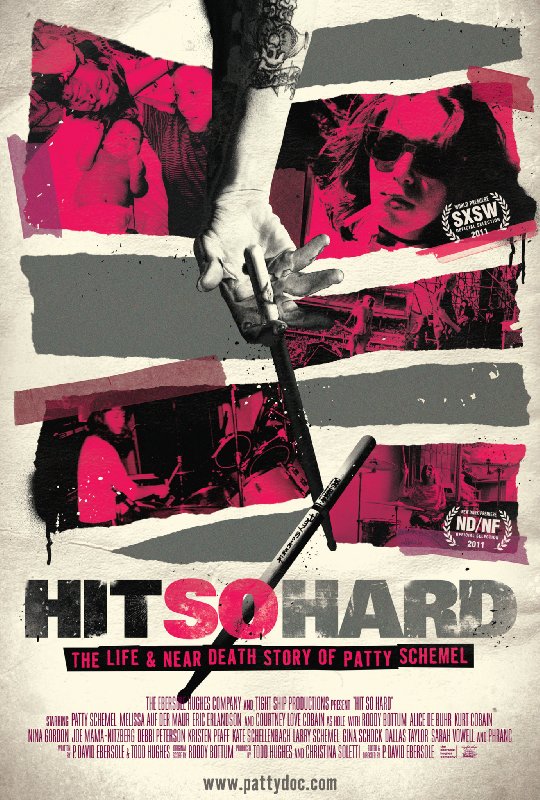
P. David Ebersole and Todd Hughes are the ultimate power duo in the doc world. Their charm, passion for their work, and sheer charisma almost makes me forget that they work behind the camera. We handled festivals and advised on distribution for their 2011 doc Hit So Hard which premiered at SXSW 2011and was released theatrically by Variance. The film was nominated for a GLAAD media award and even helped get the band, Hole, to reunite. In the short time since, they produced conspiracy theory doc Room 237 based on Kubrick’s film The Shining which world premiered at Sundance 2012 and even went to Cannes! The film grossed over $250,000 in its North American release. Ebersole directed and the duo produced the Lifetime Doc Dear Mom, Love Cher.
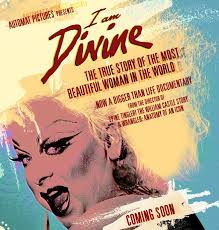
Jeffrey Schwarz’s doc Vito world premiered at NYFF 2011 and screened in Berlin 2012 before opening both Outfest and Frameline and airing on HBO. Like Hit So Hard, it was also nominated for a GLAAD media award. Schwarz is as beloved for his films as he is for his flawless EPK’s. He is back with TFC for his latest doc, I Am Divine, a look at the life and talent of the ultimate John Waters muse which world premiered at SXSW 2013 and was recently acquired by Wolfe Releasing. We are handling festivals and international sales.
Jennifer Arnold’s poignant and inspirational doc A Small Act debuted at Sundance 2010 and went on to air on HBO and was nominated for an Emmy! Since then this dynamo has been hard at work. She directed the doc segments Glee: The 3D Concert Movie, her ESPN doc The Diplomat was just at Tribeca and she has directed for the shows TableTop and Biz Kids.
David Weissman is a San Francisco icon. His films The Cockettes and We Were Here both brought important parts of Gay SF history to a wider audience and world premiered at Sundance. We Were Here went onto screen at Berlin and play a full week theatrical engagement at the 1,400 seat Castro theater. This touching doc on early AIDS activists was released theatrically by Red Flag Releasing, nominated for a Spirit Award and short listed for the Academy Award. Since its release, he has been generating headlines for highlighting his own problems in dealing with the sky high rent of the city and the harm imposed by the Ellis Act. He has since moved to Portland full time where he programs the only Queer Doc film festival in the world.
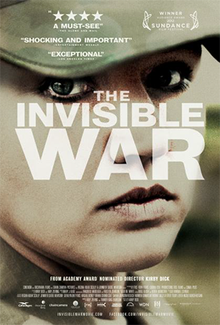
Then there is Kirby Dick and his film The Invisible War. TFC sold the film to New Video and Cinedigm (who have since merged) shortly after it won the Audience Award at Sundance 2012. This hard hitting doc about the rape and sexual abuse of soldiers in the US military has screened multiple times at the Pentagon and been cited for the changes in how the military handles sexual assault cases. It maintains a 100% rating on Rotten Tomatoes and was nominated for an Academy Award. In addition to sales, TFC handled festivals, broadening the stories of these victims’ to be heard all over the world. Given his prolific library of work (he’s had five films in competition at Sundance) we cannot wait to see what he does next.
The Film Collaborative feels very fortunate to have worked with filmmakers of this caliber and we look forward to seeing what the future holds for all of them.
Bryan Glick July 11th, 2013
Posted In: Distribution, Filmmakers of note
Tags: A River Changes Course, A Small Act, David Weissman, documentaries, Hit so Hard, I am Divine, independent film, Jeffrey Schwarz, Jennifer Arnold, Kalyanee Mam, Kirby Dick, Marta Cunningham, P. David Ebersole, The Film Collaborative, The Invisible War, The New Black, Todd Hughes, Valentine Road, Vito, We Were Here, Yoruba Richen
Following up on TFC filmmakers-The narratives
The Film Collaborative has been around for over three years now and in that time we’ve seen our films and members go on to win multiple audience and jury awards at Sundance, get nominated for Oscars and win Emmy’s, last year alone we had 6 films nominated for Independent Spirit Awards.
Not only are we dedicated to our current clients, we are just as invested in our filmmakers’ future projects and we wanted to follow up on what some of our TFC Alumni have been doing. This week we’ll highlight some of our narrative film directors.
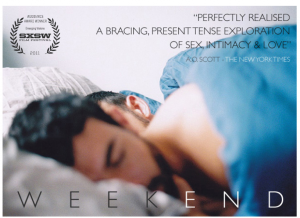
Andrew Haigh’s Weekend took SXSW 2011 by storm, won the audience award and was released in the US by IFC/Sundance Selects. Andrew most recently directed an HBO pilot about the lives of gay men in San Francisco that was just picked up to series. The show, starring Jonathan Groff, will premiere in the spring of 2014.
Aurora Guerrero’s debut feature Mosquita Y Mari premiered in the NEXT section at Sundance 2012 and was acquired by Wolfe Releasing. It was nominated for an Independent Spirit Award and Aurora is hard at work on her follow up Los Valientes. She was awarded a $35,000 grant by San Francisco Film Society and we can’t wait to see what she has up her sleeve for this film.

Jonathan Lisecki’s witty banter shined in Gayby which debuted at SXSW 2012. Nominated for a Spirit Award for Best First Screenplay and released by Wolfe, the film has been making audiences laugh around the world. In fact, it reached as high as #5 on iTunes during Pride Week after being chosen as Movie of the Week by Apple. Jonathan co-produced and stars in Big Gay Love opposite Nicholas Brendan (Buffy The Vampire Slayer). The film just screened at Frameline and will be coming to Outfest later this month.
Spike Lee is certainly one of the more prolific filmmakers to come our way. Red Hook Summer premiered at Sundance 2012 and grossed over $300,000 when it was released theatrically by Variance. In what has been a busy year for the bold auteur, his documentary Bad 25 premiered at the Toronto Film Festival 2012 and aired on ABC. He has multiple films lined up in the next year.
Ira Sachs is another indie veteran, but his film Keep the Lights On brought him his widest audience to date. It premiered at Sundance 2012, won the teddy at Berlin, and was nominated for four Spirit Awards. It was snatched up by Music Box and was the highest grossing gay film of the year. Since then, Ira was named a Guggenheim Fellow and his follow up Love is Strange stars Alfred Molina and Michael Gambon.
Special Producers Shoutout
Laura Heberton, who produced Gayby, had Matthew Porterfield’s I Used to be Darker at Sundance this year and Bluebird at Tribeca.
Chad Burris’s film Ass Backwards brought him back to Sundance just one year after Mosquita Y Mari.
Next week we’ll take a look at what our documentary filmmakers are doing now.
Bryan Glick July 3rd, 2013
Posted In: Filmmakers of note
Tags: Andrew Haigh, Aurora Guerrero, Chad Burris, Gayby, independent film, Ira Sachs, Jonathan Lisecki, Keep the Lights On, Laura Heberton, Mosquito y Mari, Red Hook Summer, Spike Lee, TFC filmmakers, The Film Collaborative, Weekend
Digital distribution AND marketing support is the aim of Devolver
Just prior to SXSW, I was contacted by a new digital distribution outfit called Devolver Digital Film who were launching during the festival. I rolled my eyes as I opened the email because frankly, digital distributors are becoming a dime a dozen and few offer anything that differentiates their services. Yes, they are all non exclusive, but most do not have much to offer in the way of audience recognition of the platform.
Film distribution in some fashion isn’t difficult to obtain anymore…but getting an audience to know a film is available, actively seek it out AND getting them to watch it is another story. So, I was intrigued to find out that Devolver is planning to help solve that problem. Devolver Digital Films is a company expansion out of video game publishing and distribution. Devolver is primarily known for the Serious Sam series of games and their success within the video game industry coupled with founder Mike Wilson’s filmmaking interests lead to a desire to use the same successful game marketing techniques for independent films.
The company’s first title, Cancerpants, is described as “a story about life, love, and a young woman’s journey with breast cancer.” Cancerpants is currently available on VOD networks Verizon and Frontier, and will reach Comcast, Cox, Cablevision, and Dish Online on June 4th. Local theatrical screenings are planned for May 30th in several cities including Grass Valley, CA (hosted by the filmmaker), Los Angeles, Austin, Houston, Oakland, and New York City.
I spoke with Andie Grace, VP of Acquisitions, and Mike Wilson, Partner and filmmaker, to hear what lead to Devolver’s foray into independent film distribution and what they plan to offer that other digital distributors don’t.
AG: “The experience that motivated the creation of Devolver Digital Films comes from the games space. Mike is also a filmmaker and he knows what it is like to run up against the wall of getting distribution. After spending years of making the film, getting your own network together, hitting the festival circuit and landing a distributor and then they put it out, but do little to support it. Devolver Digital would never put out a game that way and now there are so many films on the digital shelves too, a small film that is great could do a lot better with a little help.
When a filmmaker’s own network is exhausted, they themselves are exhausted and ready to move on to another project, they just need a partner to be interested enough to work the title and we saw it as a niche to be filled.”
SC: “Speaking of a niche, does Devolver have a niche audience that they are serving with films? My main problem with film distributors is they don’t really have an audience for their company. They are used to speaking to other businesses (exhibitors, video stores, broadcasters), but not speaking directly to any audience for their titles. Their titles are so diverse that they don’t even really know who is watching. Will this be a unique aspect for Devolver? Is there a Devolver audience?”
AG: “Genre fans definitely stick with a label because of what the label brings them. This is definitely true in the games space. We now have many gamers saying ‘What is my favorite game label going to do with movies?’ So our aim is to keep that fanbase alive and choose films we think they will like.
A lot of counter culture films are coming our way and I definitely look at those films and say ‘I know where to find people who will like this, I know how to organize events around this.”
MW: “Our brand will be built on films that we believe we can make bigger than they would have been without our help. Decisions on films will be based purely on what we think we can do with the network we already have in place. It won’t be according to genr. Inevitably everyone wants us to do films that are considered ‘gamer’ fare. But people who are outside of the gamer world don’t realize that gamers aren’t only into zombie movies or sci fi movies. The independent gamer tends to like lots of independent entertainment. Independent music, independent films, they tend to look a little further past the mainstream. More interesting, less predictable. So that is what we will specialize in.”
SC: “Is there something that the filmmaker has to bring with the project? Do they have to have a certain mentality? Do you want the filmmaker to be an active participant in marketing his/her work, or are you fine with them leaving it with you to make it successful?”
MW: “There are 2 kinds of filmmakers. Those that are exhausted from making the film and just want someone to take care of the rest for them. Some of those are very good films, but there is no promotional hook, and no niche we can tap easily. If they just want it out there, use our service to get it into the world, we’ll put it out for you and you can move on with your life.”
AG: “But we regard this as a partnership. We amplify what they have already started doing on their own. Anyone who wants to just turn tail and walk is probably not going to work well with us. Now, we do understand that by the time the film is ready for distribution, the filmmaker has already exhausted their network and they have done all they know how to do with their Facebook page or Twitter account and they need someone to help them, do it with them. It’s better for them to stay present, be there for the interviews, help craft the story, and use the opportunity to build their own brand as a filmmaker by working with us in a promotional partnership.”
SC: “What will be the range of services Devolver offers? I was thinking it was just digital distribution platforms, but you are working with Tugg to do events too?”
AG: “We will offer cable VOD and internet VOD right now. Being from the games world, we also have our eyes on gaming consoles. We will talk about the total distribution strategy based on the film. It may include using tools like Tugg to do some live event screenings rather than spending time exclusively on the festival circuit. Events can help power the VOD sales. We also will talk about the marketing and publicity, some of the more traditional tactics. We will motivate our own networks to help with promoting screenings. By having the film on VOD when it is in theaters, we can get it highlighted in the ‘in theaters now’ sections of Amazon Instant and such.”
MW: “We are going to be direct to the platforms when that is possible, but until we build up our catalog, it isn’t realistic to think we will be big enough to negotiate direct deals with the bigger players. With our zero overhead, we will be competitive with the percentages we take even when a third party is involved. Plus, we’re going to help promote it which should make the revenue bigger than it would if you went through an aggregator who isn’t doing that.”
SC: “Do you take rights over the film or do those stay with the artist?”
MW: “We wouldn’t take all rights like broadcast network rights, or international rights at the moment. But to the extent that we do put time in to exploit on certain platforms, we want exclusivity on those. It is just bad business for everyone if you have several companies pitching the same film. As a filmmaker, I know there are distributors who want to take all rights just in case in future they want to do something with them. That is not the case with us. Our reason for existence is to avoid that scenario, we have all experienced it as filmmakers ourselves.”
“We do ask for a minimum of one year with options to extend. Most cable operators do want a 5 year minimum. We have found on the games side that there are opportunities for digital bundles and we will want to include our films in bundles without having to keep going back to ask permission. We aren’t going to be releasing 30 movies a month or anything. The films we do have are precious to us and we will be working harder to make the small amount work for us and for the filmmaker.”
SC:”Advertising and promotion aren’t free, they often make up the majority of any kind of film release. Is this a service deal agreement where the filmmaker fronts the money for Devolver to spend or is this more like a traditional distribution situation where Devolver will front the money and recoup from revenue before the filmmaker sees any profit?”
MW: “This won’t be a six figure M&A budget. It is more like soft dollars from us in our organization and network of already existing connections. This is what helps support our games as well. Filmmakers will also be expected to help each other when they are on our label. So anything we provide from this network is just the cost of us doing business and we provide that.”
“Then, if there is an opportunity to buy into a promotional program or whatever, we’ll agree it with the filmmaker and write the check up front and share that cost. If the filmmaker gets a 60% split with us, we share the cost of the promotion.That’s the way we work in games too, it is purely situational. To the extent that they want to be involved, the filmmaker will sign off on any promotion we want to participate in and they will know the whole cost.”
“Another thing we feel is important is being completely transparent. If we do have to go through another distributor to get to a certain outlet, I will forward every royalty statement we get from that distributor so that the filmmaker knows what the revenues were. There has just been too much damage done by ‘Hollywood accounting,’ I use that term to mean all entertainment. The games industry is as bad as any. The little things we can do to remove any doubt about whether we are on the filmmakers team, we will do. The world may not need another VOD distributor, but one thing we will provide that others do not is transparency. There is always room for that.”
SC: “When is the best time for a filmmaker to approach you? In preproduction? Production? Post?”
MW: “I would say in post. We’re not a production company and we aren’t trying to influence the outcome of a movie. We can’t really have a conversation about a film until we know the level of quality it will be. Most of the people we are talking to are in fine cut or have a festival version that they still want to trim.”
AG: “We are having conversations now with people who are in post and it is pretty obvious who their audience is. We are also talking to people who are not going on the festival circuit, they are launching straight into distribution.”
MW: “We have many dream producers coming to us who get this online promotion stuff. We want to network them all together and help to promote each other.”
SC: “How will you bring them together?”
MW: “Google Hangouts I envision. I want just these producers who all have great ideas and are on the same label to get together and brainstorm with each other. Their films are all coming out near the same timeframe so I think some great creativity and excitement will come from it. I don’t think they imagine for a minute that helping someone else will hurt their own projects. It just makes their own network bigger, by aggregating everyone’s together.These are all young, smart, tech savvy producers who want to learn from each other.”
SC: “Well, that is definitely a differentiator for Devolver! Most distributors don’t bother themselves with bring together the filmmakers to help work with all the projects in the catalog. It means you really want to work with filmmakers who are giving, tech savvy and want to help make everyone’s work successful.”
MW: “The filmmaking process just sucks everything out of you, you are totally exhausted when finished and often you are the last man standing. The crew disappears after the wrap party. It will be great to have a company that knows this, pulls together a group of filmmakers in the same situation about to release their films and supports everyone.”
“It is really fun to be coming in at a time when we aren’t having to undo our skills. You go to industry panels where these veteran people are completely unsure of what is happening and frustrated at having to relearn everything because they are used to doing things in a certain way for many years. For us, it is exciting because it is wide open.”
I will be keeping an eye on this young and enthusiastic company. If you have a project you would like to approach Devolver Digital Films about, contact Andie Grace:
films [at] devolverdigital dot com
Sheri Candler May 9th, 2013
Posted In: Amazon VOD & CreateSpace, Digital Distribution, Distribution, iTunes, Netflix
Tags: Andie Grace, Cancerpants, Devolver Digital Films, Digital Distribution, digital distributor, independent film, Mike Wilson, Serious Sam, Tugg
